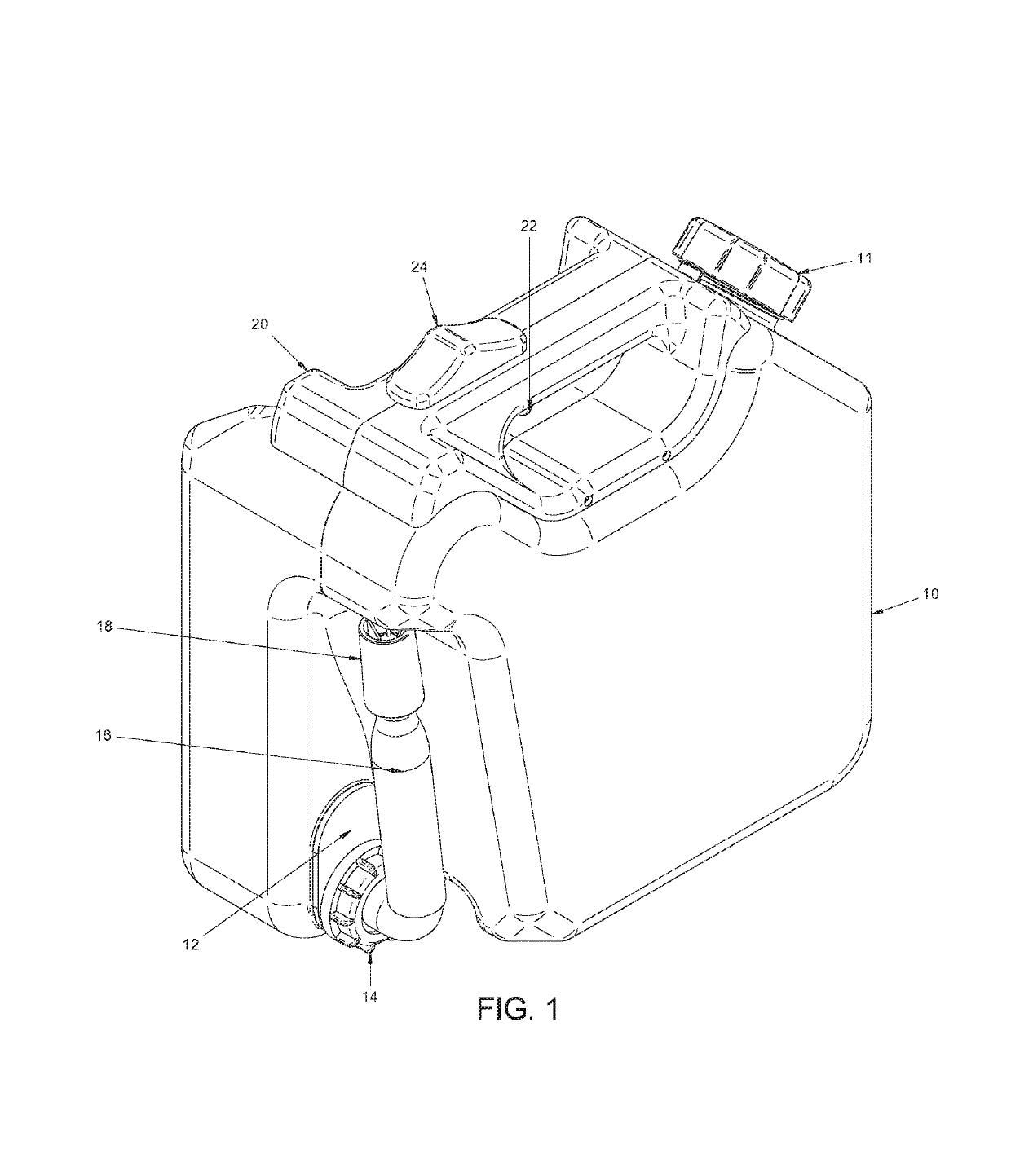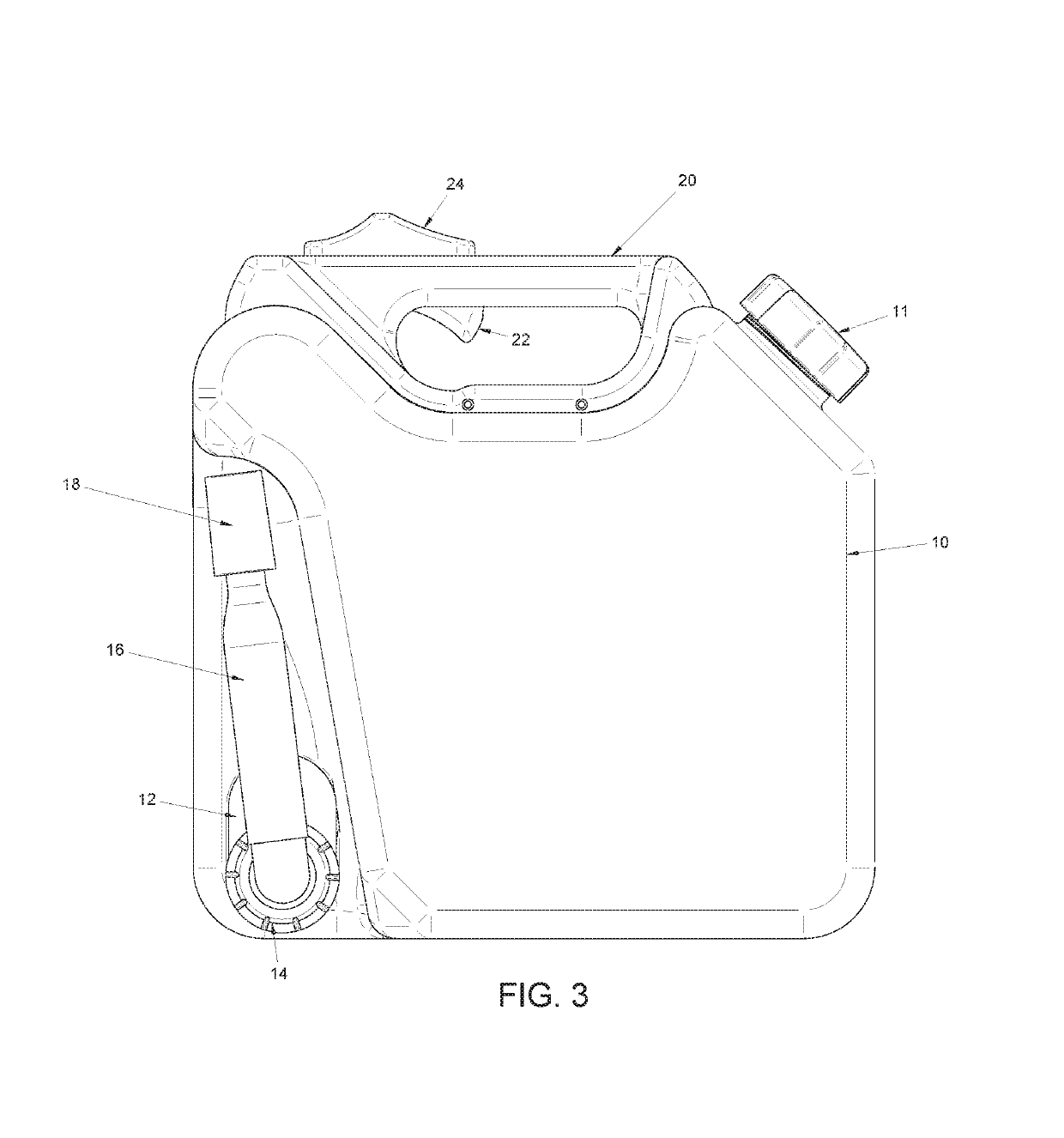Fuel container
a technology for fuel containers and portable containers, applied in the direction of liquid transfer devices, packaging foodstuffs, packaged goods, etc., can solve the problems of impracticality or impossible, impracticality or burdensome to transport such devices to a gas station to be filled, and the portability of fuel containers is often susceptible to spillag
- Summary
- Abstract
- Description
- Claims
- Application Information
AI Technical Summary
Benefits of technology
Problems solved by technology
Method used
Image
Examples
Embodiment Construction
[0048]FIGS. 1-6 are views of a Portable Fuel Container (PFC). FIG. 1 is a front perspective view of the PFC. The PFC has a body 10. Typically the body 10 is blow molded as a single element. An injection molded spout plate 12 is affixed to the body 10. Preferably, high density polyethelene (HDPE) or the like is used for the various molded components. Preferably, the spout plate 12 is attached to the body 10 by an ultrasonic welded seam. Alternatively, the spout plate 12 is attached to the body 10 by adhesives or the like. In one embodiment, the spout plate is formed with the body 10. According to one aspect of the invention, the spout plate 12 is comolded with the body 10. The spout plate 12 is arranged at a lower edge of the body 10. A spout 16 is coupled to the body 10 at the spout plate 12. The spout 16 is locked in place by a lock nut 14. The spout 16 is configured to rotate from a storage position shown in FIG. 1 to a use position, shown for example in FIG. 16. In one embodiment...
PUM
 Login to View More
Login to View More Abstract
Description
Claims
Application Information
 Login to View More
Login to View More - R&D
- Intellectual Property
- Life Sciences
- Materials
- Tech Scout
- Unparalleled Data Quality
- Higher Quality Content
- 60% Fewer Hallucinations
Browse by: Latest US Patents, China's latest patents, Technical Efficacy Thesaurus, Application Domain, Technology Topic, Popular Technical Reports.
© 2025 PatSnap. All rights reserved.Legal|Privacy policy|Modern Slavery Act Transparency Statement|Sitemap|About US| Contact US: help@patsnap.com



